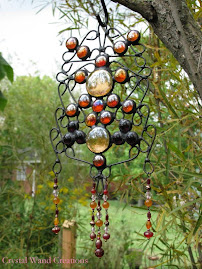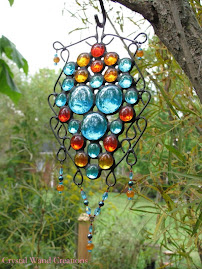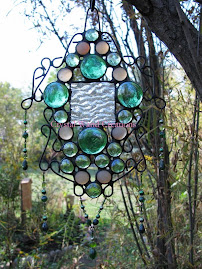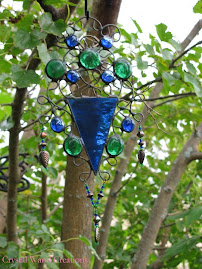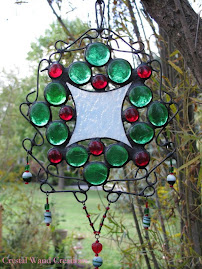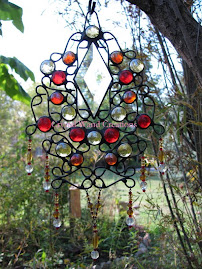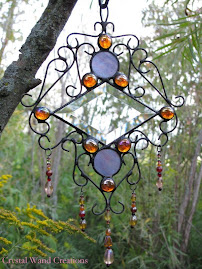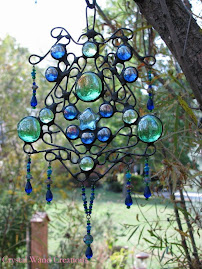 O.k. now your staring at your completely soldered piece wondering “what is patina, and should I apply it to my piece?”. Well maybe this will help you make up your mind. According to Webster’s Dictionary, ‘Patina is a film or incrustation, usually green, produced by oxidation on the surface of old bronze and often esteemed as being of ornamental value.’ The look of patina can be applied to many different surfaces other than bronze. In stained glass work there are many types and colors of patina you can apply to your piece to achieve this aged look. Most of the patina applied to stained glass is for achieving the black or dark bronze look; however, there is also a copper patina, as well as a green patina to achieve the weathered copper look.
O.k. now your staring at your completely soldered piece wondering “what is patina, and should I apply it to my piece?”. Well maybe this will help you make up your mind. According to Webster’s Dictionary, ‘Patina is a film or incrustation, usually green, produced by oxidation on the surface of old bronze and often esteemed as being of ornamental value.’ The look of patina can be applied to many different surfaces other than bronze. In stained glass work there are many types and colors of patina you can apply to your piece to achieve this aged look. Most of the patina applied to stained glass is for achieving the black or dark bronze look; however, there is also a copper patina, as well as a green patina to achieve the weathered copper look.With all patina’s you will need to wear gloves. Having a long sleeved shirt on would be a good idea too. You should always have some form of protective eye wear on while doing stained glass, and this holds true while applying patina as well. Before starting, you should always make sure you have good ventilation. Use a fan to keep fumes away from your face. Most patinas have an odor, though slight, some people can be highly sensitive to certain smells. If you are sensitive to the smell and it gets to be too much, then use a mask to help alleviate the problem.
For small pieces, I suggest applying the patina with a cotton ball. It absorbs a lot of the liquid and makes it easy to get into small spaces. Also, I recommend applying the patina to the entire piece, glass and all. If you just apply patina to the metal portions of your piece, you will end up having a halo effect around each piece of glass. This is where the liquid touched the glass when you applied it. If you apply the patina to the entire piece, glass and all, then this halo effect will be over the entire piece and add a slight iridization to all your glass.
After your entire piece is patinaed, let it sit for a few minutes, then wash the patina off with cold water. Dry your piece with a soft cotton clothe and let it air dry for a while longer to get it ready for polishing.
Here are some videos on applying patina. You‘ll notice that everyone has a slightly different approach. The choice is yours as to how you will apply yours. Just remember, patina is an acid and it does burn and can cause harm to you if handled incorrectly.
Applying patina 1, 2, 3, 4 .
Now all you have to do is polish your baby up, then hang it. Next entry we’ll discuss polishes. Come on we’re almost done!




